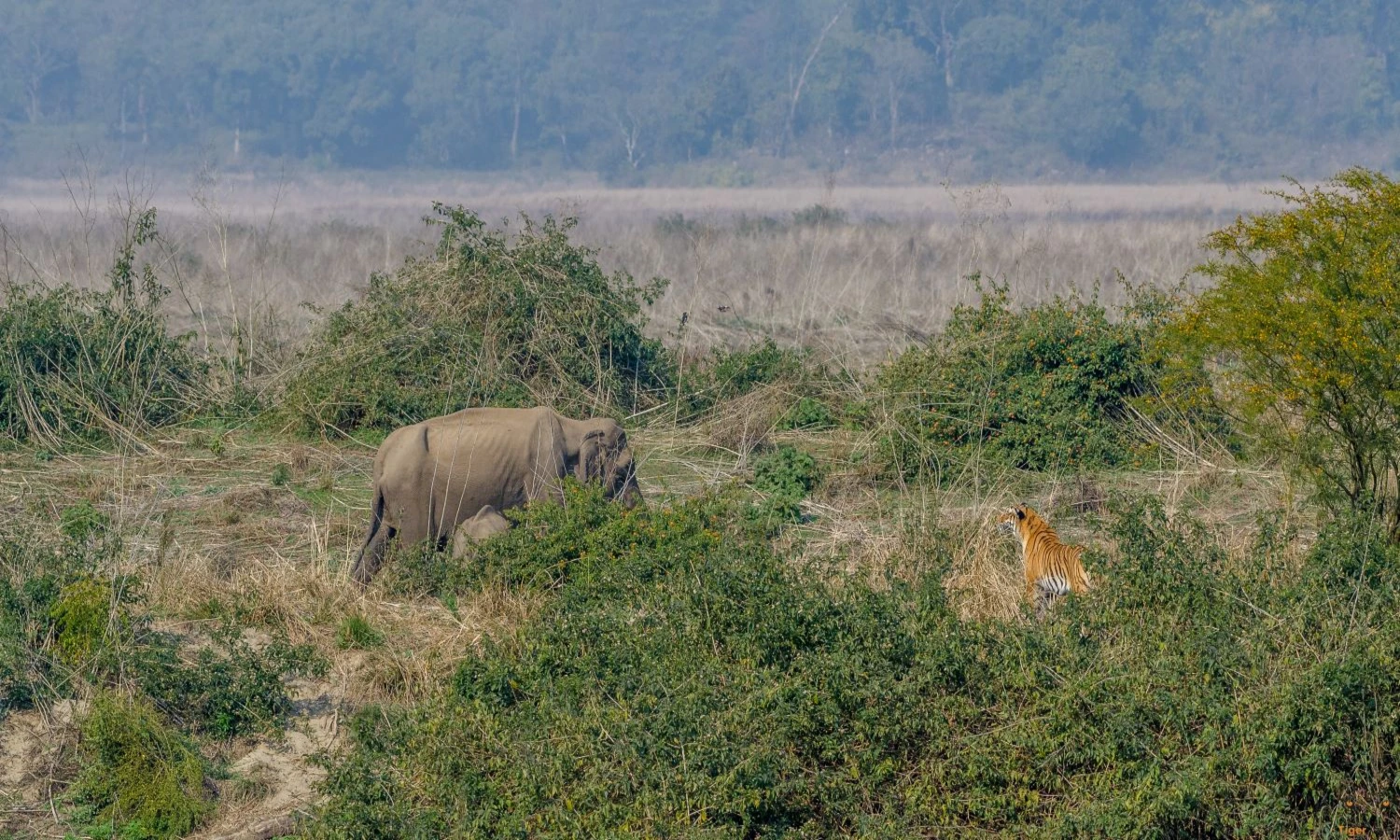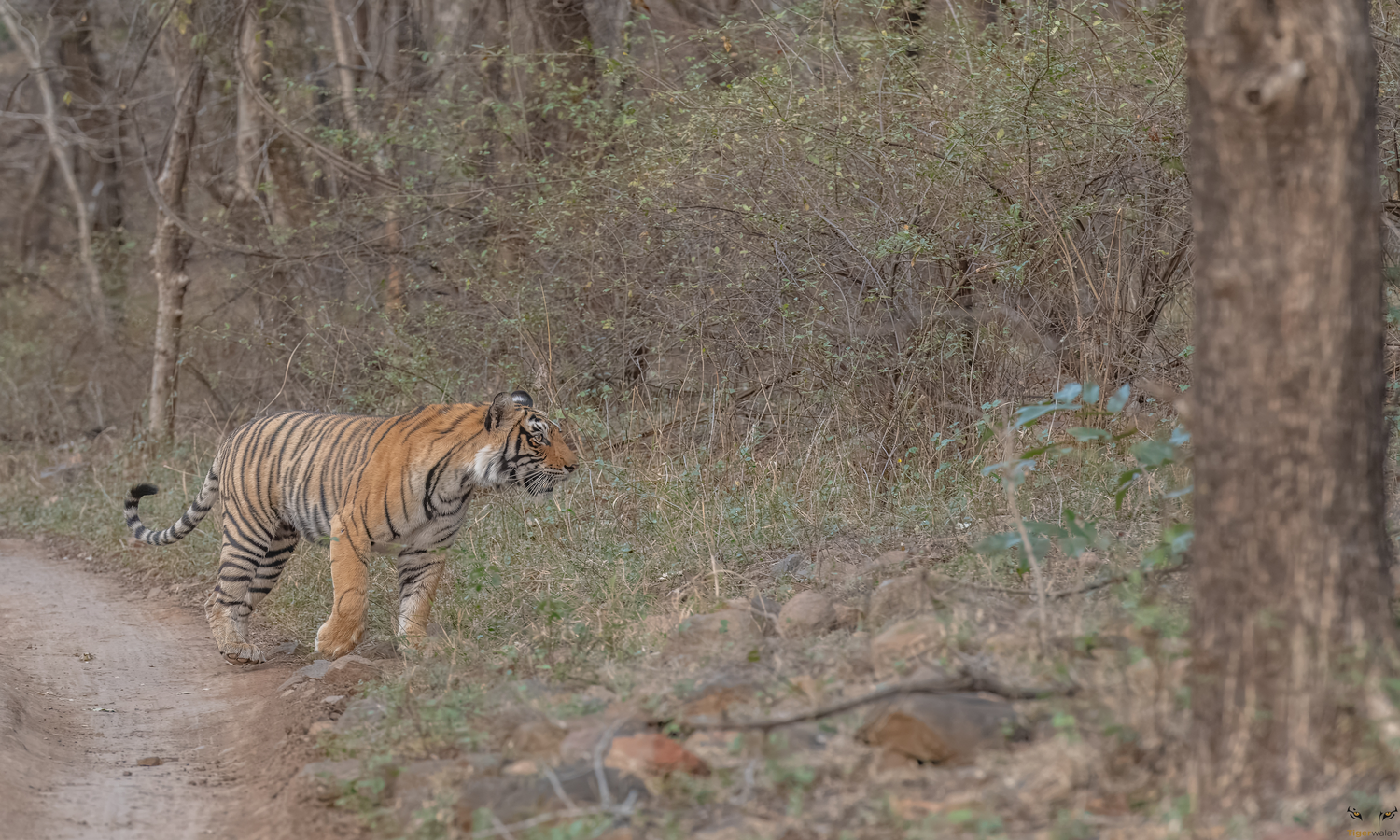Beyond Tigers: The Diverse Wildlife of Ranthambore National Park

Introduction
Ranthambore National Park is globally celebrated as a premier tiger reserve, drawing wildlife enthusiasts and photographers eager to catch a glimpse of the majestic Bengal tiger. While the tiger undoubtedly reigns supreme as the park's star attraction, Ranthambore's rich biodiversity extends far beyond its striped inhabitants. This ancient land, characterised by its rugged terrain, dense forests, and historical ruins, provides a thriving habitat for a remarkable array of flora and fauna. A safari in Ranthambore offers a holistic wildlife experience, revealing a vibrant ecosystem teeming with life. This blog post delves into the diverse wildlife of Ranthambore National Park, encouraging visitors to look beyond the tiger and appreciate the park's full ecological tapestry.
1. The Elusive Predators (Beyond Tigers)
While tigers are the apex predators, Ranthambore is also home to other fascinating carnivores, each playing a vital role in the park's ecosystem.
1.1. Leopards
Often more elusive than tigers, leopards are masters of camouflage and stealth. They prefer rocky outcrops and dense vegetation, making them harder to spot. However, with patience and a keen eye, a leopard sighting can be an incredibly rewarding experience. Ranthambore's varied terrain provides ideal habitats for these solitary hunters
1.2. Sloth Bears
These shaggy, nocturnal bears are unique to the Indian subcontinent. Known for their long, shaggy coats and distinctive white V-shaped mark on their chest, sloth bears primarily feed on termites, ants, and fruits. They are often seen foraging in the early mornings or late evenings. Ranthambore offers a good chance to spot these fascinating creatures [5].
1.3. Striped Hyenas
Often misunderstood, striped hyenas are scavengers that play a crucial role in cleaning up the jungle. They are primarily nocturnal and are rarely seen during the day. Their distinctive striped coats and powerful jaws make them easily identifiable if you are lucky enough to spot one.
1.4. Jackals and Foxes
Indian jackals and foxes are smaller canids that are more commonly sighted. They are opportunistic hunters and scavengers, often seen on the fringes of the forest or near water bodies.
2. The Graceful Herbivores
Ranthambore's forests and grasslands support a large population of herbivores, which form the primary prey base for its carnivores.
2.1. Sambar Deer
The largest deer species in India, the Sambar deer, is a common sight in Ranthambore. They are often found near water sources and are known for their impressive antlers. Their alarm calls are a crucial indicator of a predator's presence.
2.2. Chital (Spotted Deer)
Chital, or spotted deer, are perhaps the most abundant deer species in the park. Their distinctive white spots against a reddish-brown coat make them easily recognisable. They move in large herds and are a favourite prey for tigers and leopards.
2.3. Nilgai (Blue Bull)
The largest Asian antelope, the Nilgai, is a common sight in Ranthambore. Males have a bluish-grey coat, while females have a brownish coat. They are often seen grazing in open grasslands.
2.4. Wild Boar
Wild boars are robust and adaptable animals found throughout the park. They are omnivores and play a role in soil aeration through their foraging activities.
2.5. Indian Gazelle (Chinkara)
These graceful antelopes are found in the drier, more open areas of the park. They are known for their speed and agility.
3. Avian Wonders: A Birder's Paradise
Ranthambore National Park is not just for mammal lovers; it's also a haven for birdwatchers, boasting over 300 species of birds, including migratory ones. The park's diverse habitats, including lakes, rivers, and forests, attract a wide variety of avian life [4].
3.1. Water Birds
The numerous lakes and water bodies within the park, such as Padam Talab, Rajbagh, and Malik Talao, attract a plethora of water birds. You can spot:
- Kingfishers: Various species, including the Common Kingfisher, White-throated Kingfisher, and Pied Kingfisher.
- Storks: Painted Storks, Openbill Storks, and Black-necked Storks.
- Ducks and Geese: A variety of resident and migratory ducks and geese, especially during winter.
- Egrets and Herons: Little Egrets, Great Egrets, Indian Pond Herons.
3.2. Raptors
Ranthambore's skies are patrolled by an impressive array of raptors, including:
- Eagles: Crested Serpent Eagles, Changeable Hawk-Eagles, and.
- Owls: Dusky Eagle Owls, Brown Fish Owls, and Spotted Owlets.
- Vultures: Indian Vultures and White-rumped Vultures.
3.3. Forest Birds
The dry deciduous forests are home to numerous forest birds, such as:
- Indian Pitta: A colourful migratory bird known for its vibrant plumage.
- Paradise Flycatcher: With its long, flowing tail, this bird is a delight to watch.
- Peafowl: The national bird of India, peafowl are abundant, and their calls are a common sound in the jungle.
- Parakeets, Drongos, and Babblers: Many other common and endemic species add to the park's avian diversity.
4. Reptiles and Amphibians
Ranthambore's water bodies and rocky terrains also provide habitats for a variety of reptiles and amphibians.
4.1. Crocodiles
Marsh crocodiles (Mugger crocodiles) are frequently seen basking in the sun along the banks of the lakes and rivers.
4.2. Snakes
The park is home to several snake species, including pythons, cobras, and vipers, though they are rarely encountered during safaris.
Conclusion
Ranthambore National Park is a testament to the incredible diversity of Indian wildlife. While the tiger remains its most iconic resident, the park offers a rich tapestry of life that extends far beyond. From the elusive leopard and the unique sloth bear to the graceful deer and the vibrant avian species, every safari in Ranthambore is an opportunity to witness nature's grandeur. By appreciating the park's entire ecosystem, visitors can gain a deeper understanding of its ecological significance and contribute to its conservation. So, on your next visit to Ranthambore, take the time to explore beyond the tiger and discover the myriad wonders that this incredible national park has to offer.










Be the first to share your thoughts!